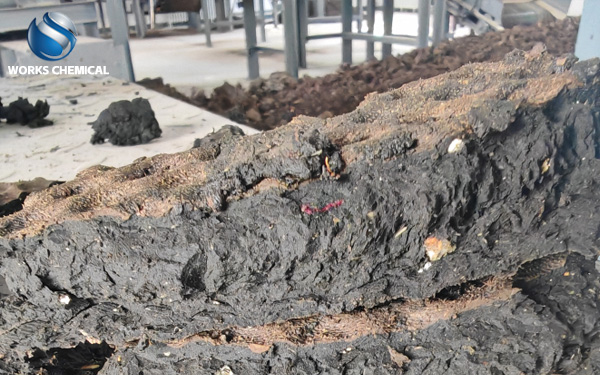
In the process of municipal sewage treatment, the generation of sludge is an inevitable problem. Municipal sludge not only has a large output but also a complex composition, containing a large amount of organic matter, pathogens, heavy metals and other pollutants. If these sludges are not properly treated, they will pose a serious threat to the environment, such as polluting soil, water bodies and air, and spreading diseases. Meanwhile, with the acceleration of urbanization and increasingly strict environmental protection requirements, the pressure on municipal sludge treatment is also constantly increasing. The traditional municipal sludge treatment methods are confronted with numerous challenges. For instance, the common mechanical dewatering method is extremely difficult to dewater due to the strong affinity between municipal sludge and water. If mechanical squeezing is relied solely on, it is very difficult to reduce the moisture content of sludge to the ideal level, which brings great trouble to the subsequent treatment and disposal. While traditional chemical conditioning agents, such as lime, iron salts and aluminum salts, can improve the dewatering performance of sludge to a certain extent, they also have obvious drawbacks. On the one hand, the use of these traditional agents will lead to an increase in the amount of sludge and a rise in subsequent treatment costs. On the other hand, it may cause secondary pollution and pose potential harm to the environment.

Against this backdrop, sludge enhancers emerged. Take the sludge efficiency enhancer as an example. It has a unique composition and mechanism of action. This sludge efficiency enhancer is mainly composed of inorganic compounds, sludge surface structure modifiers, degreasing agents, cell wall disruptors, sludge surface treatment agents, and sludge stripping agents, etc. The process of its action is multi-faceted and coordinated: Firstly, by using sludge surface structure modifiers to change the surface structure of sludge, the solid surface load and specific surface area of sludge are reduced, which alters the interaction between sludge particles and creates favorable conditions for the subsequent dewatering process; Secondly, degreasing agents can remove oily substances from sludge and reduce their hindrance to dewatering. Cell wall disruptors can destroy the structure of bacteria, release the water within the cells, and further enhance the dewatering performance of sludge. In addition, sludge surface treatment agents and sludge stripping agents can better disperse sludge particles and promote the separation of sludge and water. In practical applications, sludge enhancers have demonstrated remarkable advantages. Combined with the plate and frame sludge press, it can successfully reduce the sludge with a moisture content of over 90% to 40%-60%, achieving a significant reduction in sludge volume. This not only reduces the volume and weight of subsequent treatment, lowers transportation and disposal costs, but also provides a better foundation for the resource utilization of sludge. Moreover, the sludge enhancer is added in small amounts but can achieve a significant reduction in sludge volume. At the same time, it does not corrode equipment and is conducive to subsequent sludge disposal methods such as incineration, brick-making, and composting. In addition, the sludge prepared with the sludge enhancer is injected into the filter chamber of the filter press at a pressure of about 1.0 mpa during the dewatering process, which can efficiently filter out the free water in the sludge. When the accumulated sludge in the filter chamber reaches the designed capacity of the filter press, it enters the high-pressure pressing stage. At this point, the final dryness of the dewatered sludge by pressing is not only closely related to the effect of chemical conditioning modification, but also to factors such as the filling degree of the filter press chamber, the pressing pressure increase rate, and the retention time of the pressing pressure. When achieving better results with sludge enhancers, adopting high-pressure feeding and high-pressure pressing can shorten the time of the entire pressing section and enhance production efficiency. Moreover, the fully automatic unloading and the reverse blowing and washing of the filter medium (filter cloth) are completed simultaneously, which not only reduces the labor intensity of the control workers but also improves the efficiency of the completed actions, maintains the effect of the filter cloth in intercepting sludge and permeating water, reduces the frequency of filter cloth replacement for mechanical equipment, and saves the operating costs of the enterprise.